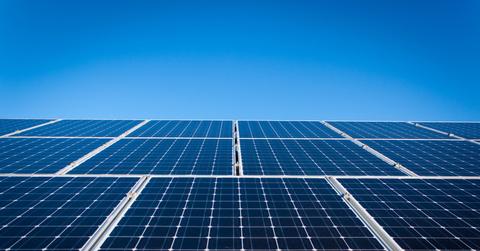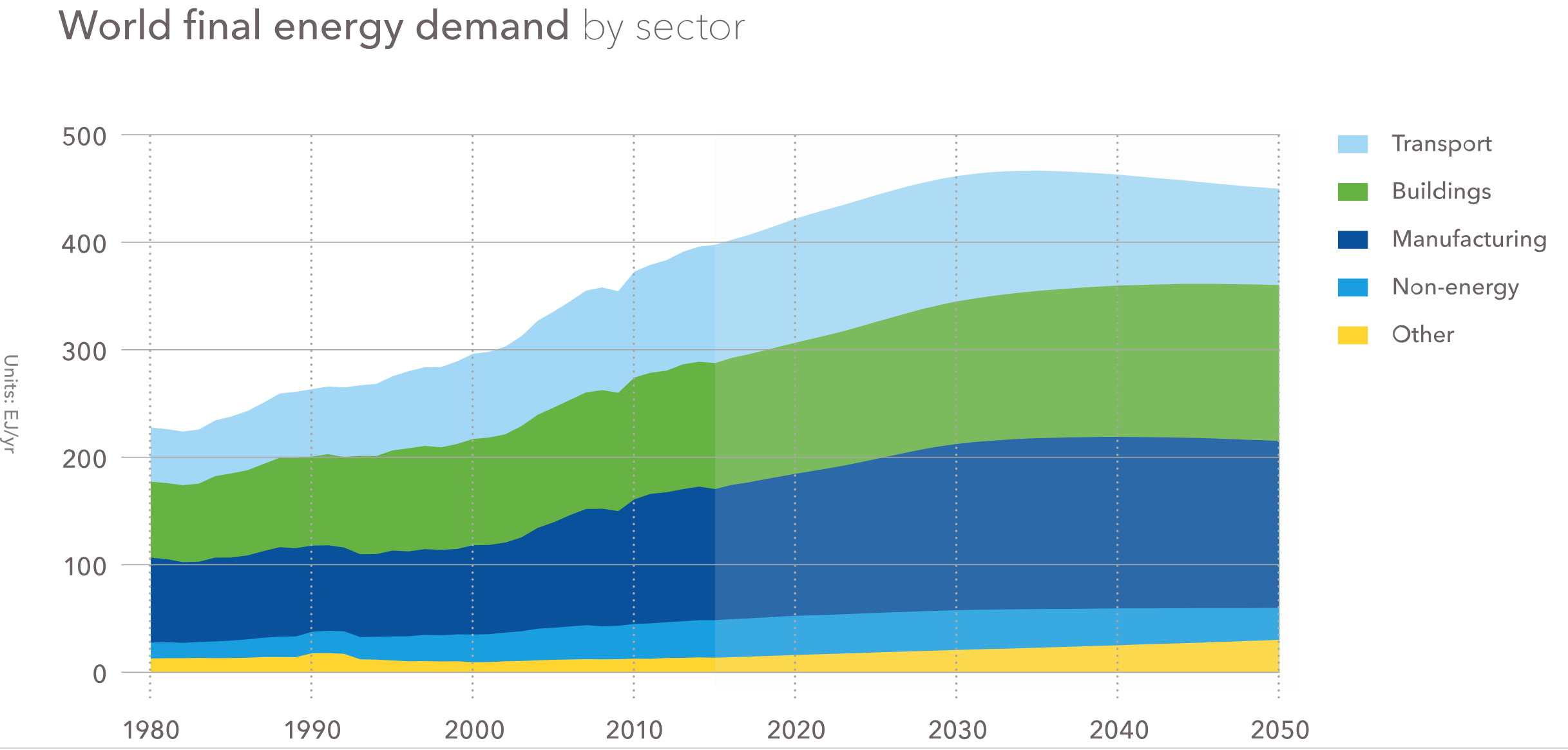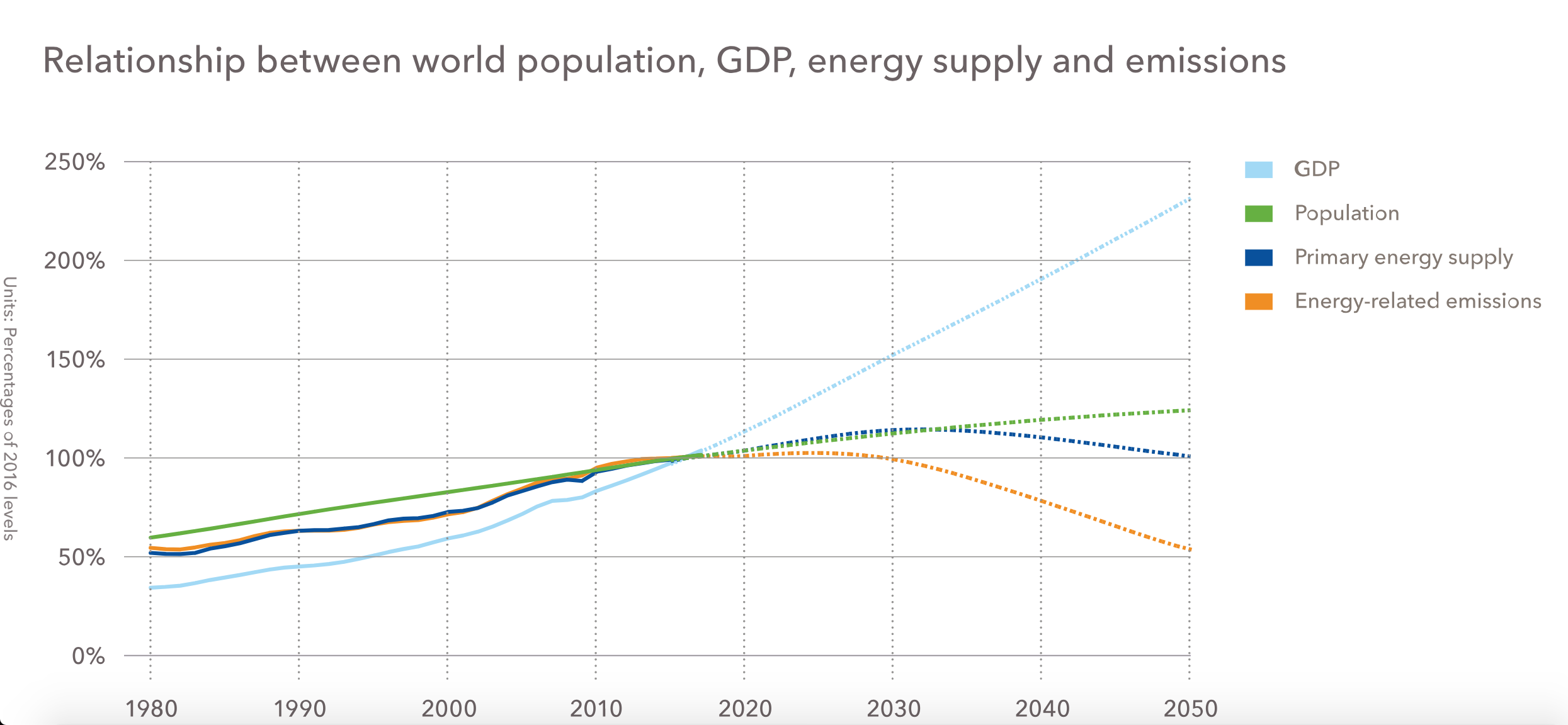A New Report Says Solar Energy Could Grow 6,500% By 2050
Industry experts explain in a new report how the world's energy system will decarbonize by 2050 making solar energy one of the largest sources of energy in the world.
Updated Oct. 17 2018, 11:26 a.m. ET

Solar power is one of the most abundant, efficient and clean sources of energy available. Solar panels and solar power-generating windows are just a couple of innovative things people have come up with to take advantage of the sun, but that's just scratching the surface of the industry's potential.
Now a new report by industry experts says the solar energy industry will only continue to grow, predicting it could increase to 6500 percent by 2050.
The Energy Transition Outlook 2018 report from DNV GL, a quality-assurance and risk-management company, predicts solar electricity production could grow 65-fold by 2050 thanks to factors like the industry low barriers to entry, solar energy systems becoming more common, and the rising costs of using traditional power grids. It's not just consumers making the transition but businesses and local governments as well.

According to the report by DNV GL, only 290 gigawatts (GW) of solar was installed at the end of 2016, and about 100 GW are now being built per year. By 2050, DNV GL expects 18,895 GW to be installed by 2050. If analysts are right, this would make solar one of the largest sources of energy in the world.
Highlights of the report state the world will need less energy from the 2030s onwards owing to rapid energy efficiency gains and that the world's energy system will eventually decarbonise with fossil fuels and clean energy sources split equally as primary energy sources. The report also shares oil demand will peak in 2020s and natural gas will take over as the biggest energy source in 2026.

Other reports from experts on clean energy have shared similar findings in how sustainable energy could continue to grow. A recent report released from analysts at Bloomberg New Energy Finance (BNEF) looked at the importance of decentralized energy grids in a growing, modern world. It estimated 72 million new homes will be solar-powered by 2030 as access to cheap, sustainable sources of energy continues to expand.
The director of the UN’s Industrial Development Organization, Li Yong, called on nations to “move towards decentralized energy systems which entail decentralized energy generation and storage, as well as community involvement.”
He says to get us there we should be “funding options to enable investment for low-carbon infrastructure and the deployment of leap-frogging technologies.” In the end, he stressed the importance of the commitment to a “leave no one behind” energy policy for 2030.
“Of the 238 million new households to get electricity between now and 2030,” he continued, “72 million will use solar home systems and 34 million will benefit from microgrids.”
Solar and wind power together are projected to provide two-thirds of all electricity in 2050. As long as there's innovation and R&D in renewable energy to help reduce total costs of transitioning from traditional power grids these predictions on where the industry might go could prove to be right.